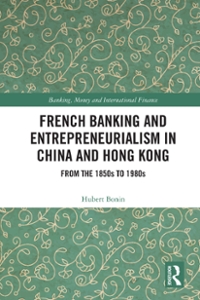Question
Part one. Consider a two-period small open economy populated by a large number of identical households with preferences described by the utility function lnCT 1
Part one.
Consider a two-period small open economy populated by a large number of
identical households with preferences described by the utility function
lnCT 1 + lnCN 1 + lnCT 2 + lnCN 2
where CT 1 and CT 2 denote consumption of tradables in periods 1 and 2, respectively, and CN 1 and CN 2 denote consumption of nontradables in periods
1 and 2. Households are born in period 1 with no debts or assets and are
endowed with L1 = 1 units of labor in period and L2 = 1 units of labor in
period 2. Households oer their labor to rms, for which they get paid the
wage rate w1 in period 1 and w2 in period 2. The wage rate is expressed in
terms of tradable goods. Households can borrow or lend in the international nancial market at the world interest rate r. Let pN 1 and pN 2 denote the
relative price of nontradable goods in terms of tradable goods in periods 1
and 2, respectively.
Firms in the traded sector produce output with the technology QT 1 = aTLT 1 in period 1 and QT 2 = aTLT 2 in period 2, where QT t denotes output in period t = 1,2 and LT t denotes employment in the traded sector in period t = 1,2.
Similarly, production in the nontraded sector in periods 1 and 2 is given by
QN 1 = aNLN 1 and QN 2 = aNLN 2 .
1. Write down the budget constraint of the household in periods 1 and 2.
2. Write down the intertemporal budget constraint of the household.
3. State the household's utility maximization problem.
International Macroeconomics, Chapter 9 299
4. Derive the optimality conditions associated with the household's max
imization problem.
5. Derive an expression for the optimal levels of consumption of trad
ables and nontradables in periods 1 and 2 (CT 1 , CN 1 , CT 2 , and CN 2 ) as functions of r, w1, w2, pN 1 , and pN 2 .
6. Using the zero-prot conditions on rms, derive expressions for the real wage and the relative price of nontradables (wt and pN t , t = 1,2),
in terms of the parameters aT and aN.
7. Write down the market clearing condition for nontradables.
8. Write down the market clearing condition for labor.
9. Using the above results, derive the equilibrium levels of consumption ,
the trade balance, and sectoral employment (CT 1 , CT 2 , CN 1 , CN 2 , TB1, TB2, LT 1 , and LT 2 ) in terms of the structural parameters aT, aN, and r.
10. Is there any sectoral labor reallocation over time? If so, explain the intuition behind it.
Part two.
Question 1:
Consider the market structure of pharmacies, given the current Covid - 19 situations.
a)Considering only local medicines, under which market structure do pharmacies fall under? Explain your answer linking pharmacies with the assumptions of the market structure.
b)As demand for medicines is going up, hence the demand for pharmacies is also going up. What will happen to the profits in the short run?
c)How will the market adjust in the long-run equilibrium? Draw the relevant diagrams and explain in terms of pharmacies.
Question 2:
Consider the market structure of the restaurants in Dhaka City.
a)What type of market structure can this be characterized as? Explain your answer by linking the case of restaurants with the assumptions of the market structure.
b)As demand goes up, what happens to the profits of the restaurants in the short run?
c)If this leads to new entry, how will the market return to long-run equilibrium to attaining normal profit? Show the diagram of profit and normal profit.
Part c.
d)How can a restaurant continue to keep profits in the long run? Suggest two strategies they can apply.
e)To achieve productive efficiency in relation to their excess capacity problem, what can a restaurant do? Will it be a wise strategy to do so?
Question 3:
Consider the garments industry in Bangladesh.
a)Given that most of the companies in this industry work with similar brands with similar requirements at similar prices, which market structure can you approximately associate it with? Why?
b)Under what circumstances will a monopolistic structure be preferred to the market structure you have mentioned above? Draw a diagram to explain.
What is the concentration ratio? If the concentration ratio is high, what is it mean for the size of the industry in terms of the number of firms in the industry?
Part c
Step by Step Solution
There are 3 Steps involved in it
Step: 1

Get Instant Access to Expert-Tailored Solutions
See step-by-step solutions with expert insights and AI powered tools for academic success
Step: 2

Step: 3

Ace Your Homework with AI
Get the answers you need in no time with our AI-driven, step-by-step assistance
Get Started


